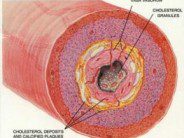In the 30 years since its first description, AIDS (Acquired Immune Deficiency Syndrome) has gone on to kill approximately 30 million people throughout the world. In the United States, AIDS has killed approximately 615,000 people to date. At this point in time, there are an estimated 34 million people worldwide that live with the human immunodeficiency virus (HIV) which causes the syndrome known as AIDS. There have been over 30 medications developed to combat the HIV virus. Combinations of antiretroviral medications and protease inhibitors, known as highly active antiretroviral therapy, has made HIV infection a chronic disease and has allowed patients to live almost normal life spans. The pandemic caused by HIV/AIDS is one of the greatest in the history of mankind. It is through the insight and intelligence of the first physicians and scientists that worked on the disease that we have been able to accomplish the advances that we have made. Exactly 30 years ago today, on June 5, 1981 there appeared in Morbidity and Mortality Weekly Report the first descriptions of what would become known as AIDS. The report described five cases of Pneumocystis carinii pneumonia (PCP) in homosexual men from Los Angeles that were previously healthy. Two had died of the disease. An editorial commentary keenly noted “All the above observations suggest the possibility of a cellular-immune dysfunction related to a common exposure that predisposes individuals to opportunistic infections such as pneumocystosis and candidiasis”. In the weeks that followed, there were also reports of Kaposi’s sarcoma and Pneumocystis pneumonia among homosexual men in New York City and California. Later that summer, the term AIDS was established and there ensued an aggressive search for the causative agent. In 1983, physicians and scientists lead by the French virologist Dr. Luc Montagnier discovered a human retrovirus that they named lymphadenopathy-associated virus, or LAV. It was suggested that this human retrovirus “may be involved in several pathological syndromes, including AIDS”. A year later, a research team led by the American virologist Dr. Robert Gallo confirmed the discovery of the virus and that it caused AIDS. They gave their human retrovirus the name human T-lymphotropic virus type III (HTLV-III). Subsequently, there was a contentious and acrimonious dispute as to who had first isolated the HIV virus. In 1990, the National Institutes of Health attempted to resolve the dispute by having an independent group analyze laboratory specimens from both laboratories. The investigative group, led by Dr. Sheng-Yung Chang concluded that Dr. Gallo’s virus had come from Dr. Montagnier’s laboratory by a contamination process. Currently, it is recognized that Dr. Montagnier’s group first isolated HIV, but Dr. Gallo’s group showed that the virus causes AIDS. In 2008, Dr. Luc Montagnier and his colleague Dr. Françoise Barre-Sinoussi shared the Nobel Prize in Medicine and Physiology for the discovery of the HIV virus. Dr. Robert Gallo was not included. There is no doubt that both groups contributed to the scientific body of work leading to the discovery of the HIV virus. Dr. Montagnier is quoted as saying “It was important to prove that HIV was the cause of AIDS, and Gallo had a very important role in that”.
Today in Medical History: Pneumocystis carinii Pneumonia Reported in First AIDS Cases Followed by Discovery of HIV Virus
by Dr Sam Girgis on June 5, 2011










 DrSamGirgis.com is a blog about medicine, nutrition, health, wellness, and breaking medical news. At DrSamGirgis.com, the goal is to provide a forum for discussion on health and wellness topics and to provide the latest medical research findings and breaking medical news commentary.
DrSamGirgis.com is a blog about medicine, nutrition, health, wellness, and breaking medical news. At DrSamGirgis.com, the goal is to provide a forum for discussion on health and wellness topics and to provide the latest medical research findings and breaking medical news commentary.
{ 0 comments… add one now }